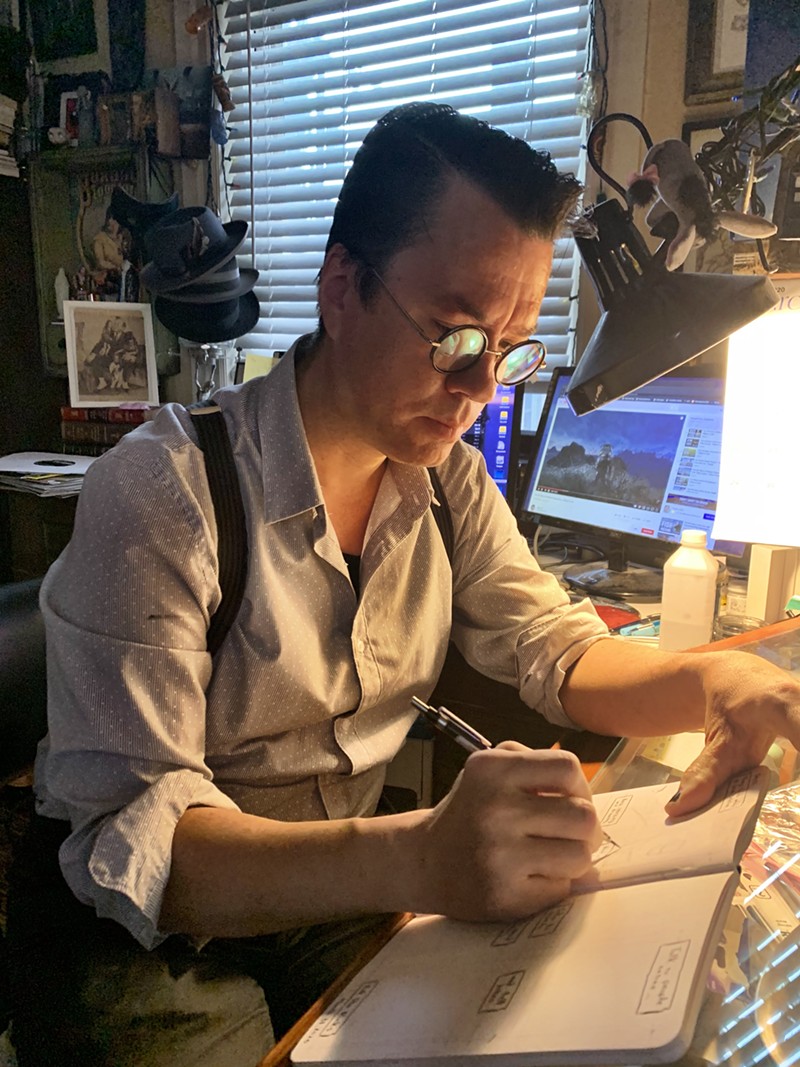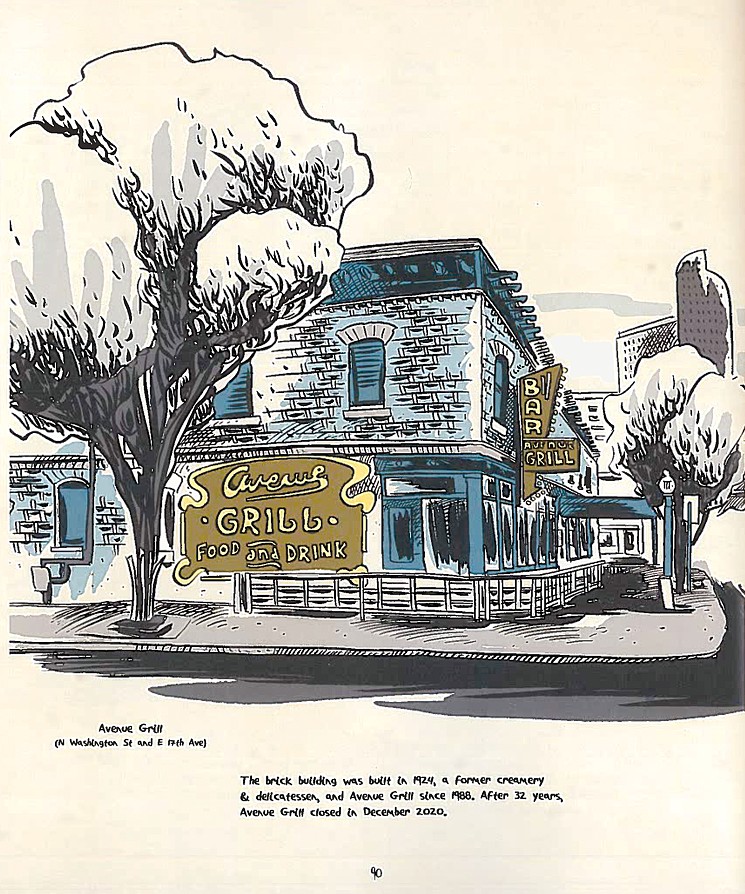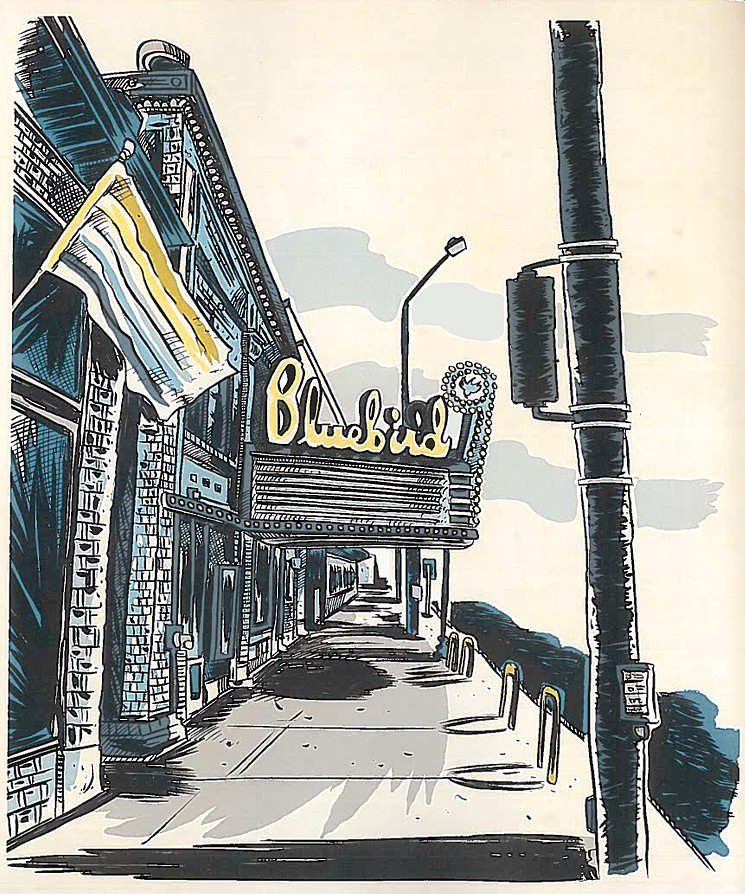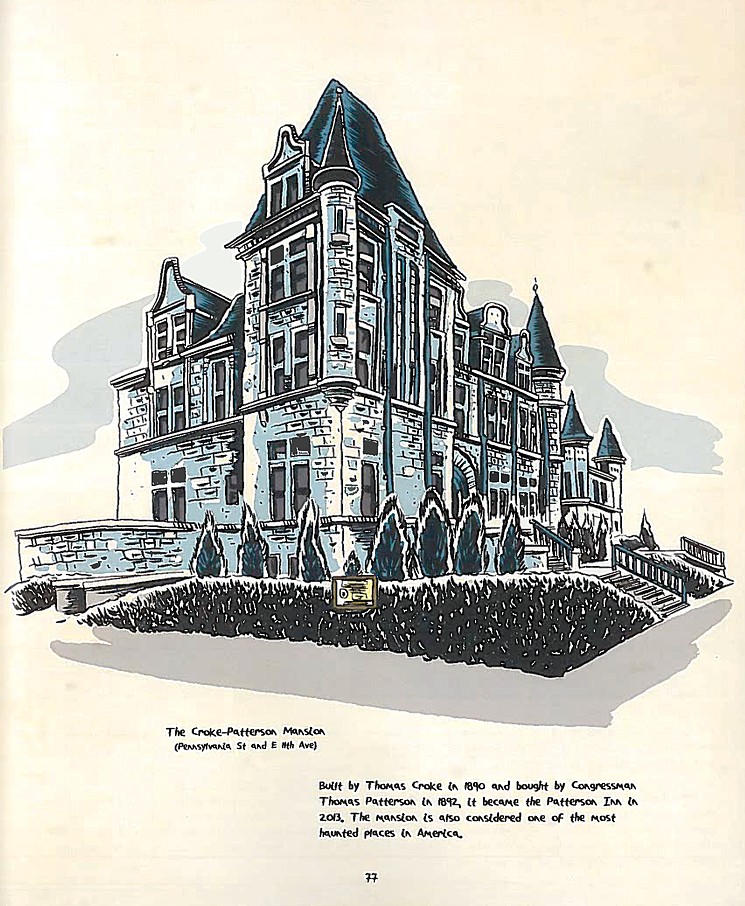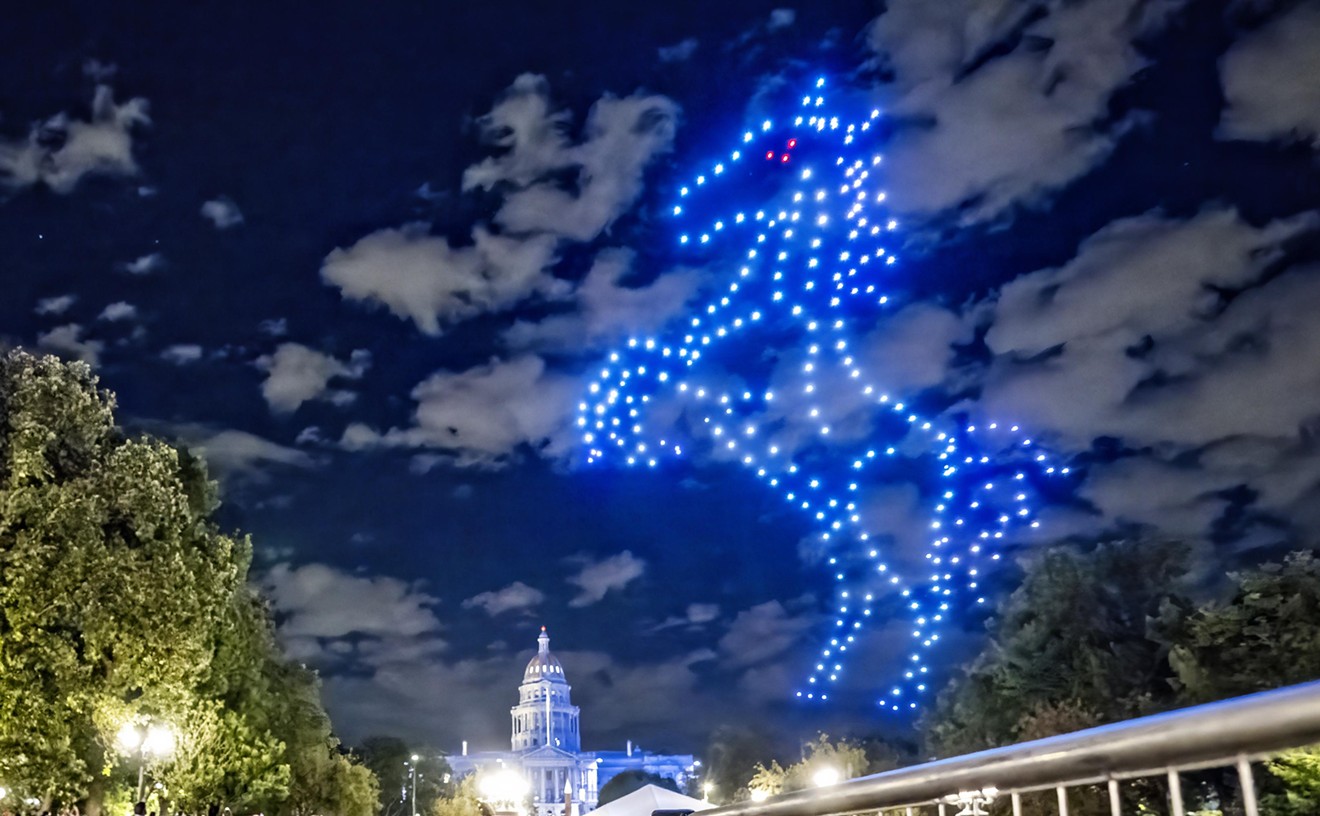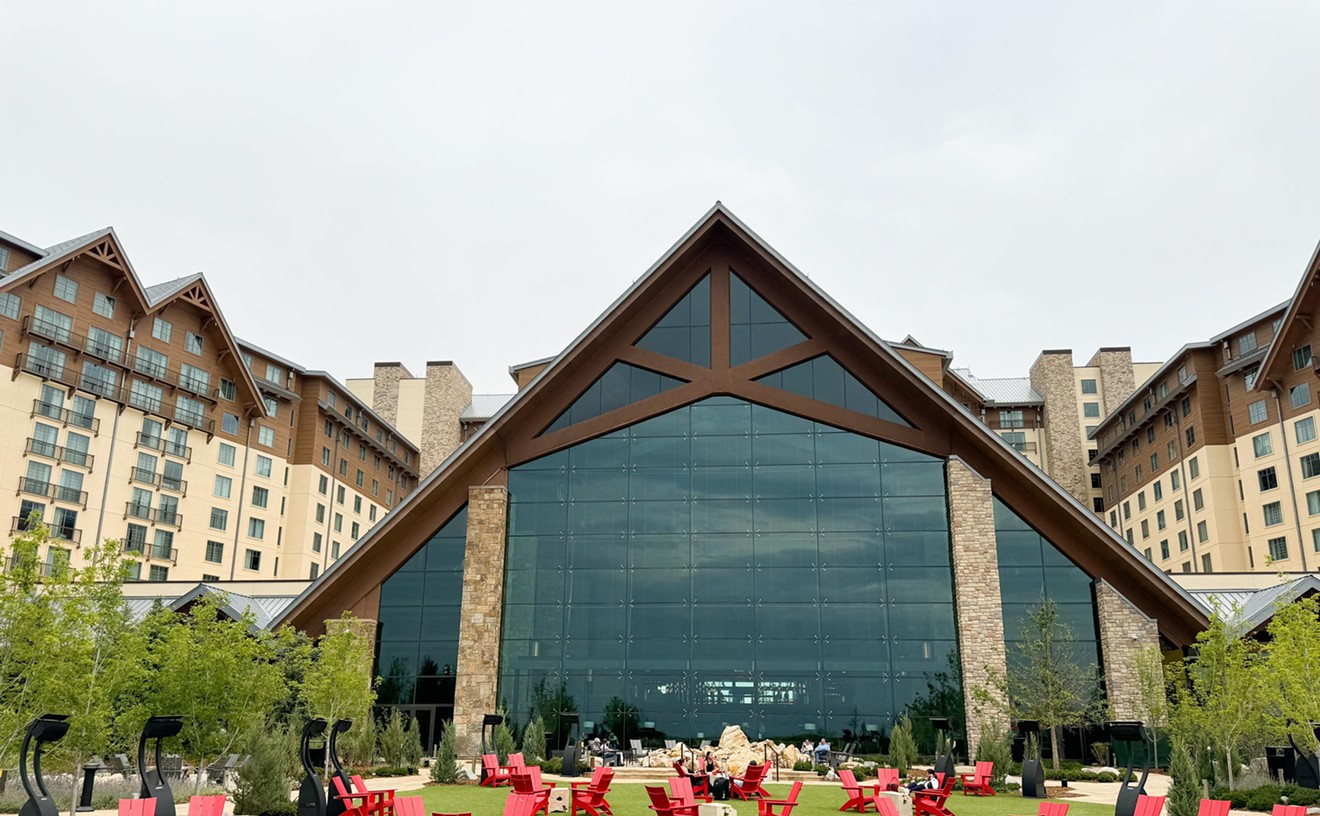When cartoonist Karl Christian Krumpholz flew to Denver to visit his girlfriend fifteen years ago, he looked out the window of the airplane and was confused by what he saw. Where’s the city? he wondered. Why was he in the middle of the plains when Denver, surely, was in the Rocky Mountains?
Krumpholz, who had lived in Philadelphia and Boston, had been warned by his girlfriend that Denver was a cowtown. When he told her that he wanted to live here anyway, she cautioned him that he might be miserable. But he was in love, looking forward to experiencing something other than East Coast culture, and quickly became fascinated with the Mile High City — so he left Boston and headed west. He and his girlfriend eventually married, and he’s been here, drinking his way through the city's dives, ever since.
“I still don’t consider Denver my hometown,” he insists.
But the city considers Krumpholz one of its own. Westword has run his strips about local venues and bands since 2015. His illustrations of local establishments have hung on banners on East Colfax Avenue. The City of Denver commissioned him to document the stories of people experiencing homelessness as part of its Denver Smart City urban-planning initiative. Bars and restaurants proudly display his cartoons on their walls, and he has regularly chronicled his life here in zines and books, even documenting lockdown life since the pandemic began, in the series The Lighthouse in the City.
Over the past fifteen years, he’s seen Denver’s economy boom and bust, and watched as many of the dives and haunts he once frequented shuttered their doors: Barracuda’s, Streets Denver, El Chapultepec, Tooey’s Off Colfax, and on and on.
While grief has rippled through town after each closure, Krumpholz has an existentialist attitude about the unceasing change. “You look at the transient nature of a city,” he says. “Places come and go.”
Still, that morphing cityscape is the backbone of his latest book, Queen City: A Brief History and Illustrated Architecture New and Old of Denver, Colorado, a collection of illustrations of iconic buildings, bars, theaters and more from this town's founding in 1858 through the present rash of closures.
The book, illustrated in Krumpholz’s signature brooding palette of cyan, gray, black, yellow and white, walks readers through Denver’s sordid and cherished past, with snackable looks back at some of the colorful characters and spaces that have shaped the spirit of this place for more than 160 years.
Students of the city’s history will recognize the big names, like Titanic survivor and socialite Margaret Brown; Mattie Silks, brothel owner and the “queen of Denver’s Red Light District”; and Dr. Justina Ford, the first licensed Black female physician in town. While quotes from Jack Kerouac and Allen Ginsberg set the mood, the book also offers little-known histories of such beloved dives as Bar Bar, iconic jazz hubs like the Rossonian and the Roxy Theatre, and some of the artist's personal favorites, including Mutiny Information Cafe and Streets of London.
While Krumpholz started working on the book with Denver’s Tinto Press last year, many of the histories and cartoons had already appeared in Westword in the Denver Bootleg series, which ran weekly from 2015 to 2017. During those three years, Krumpholz talked to staples of the city's music scene ranging from Mercury Cafe owner Marilyn Megenity to AEG Presents promoter and Fox Theatre co-founder Don Strasburg.
Queen City was first conceived as a thin volume based on banners that Krumpholz had drawn memorializing such Denver venues as the Lion’s Lair and the Bluebird Theater for the Colfax Avenue Business Improvement District. But with shutdowns hitting the city, he and Tinto Press changed their approach. “I wanted to draw everything we knew was going away,” Krumpholz explains.
As word spread that he was working on the project, venue owners and patrons started contacting him with ideas about spots to include. Krumpholz’s criteria for picking locations and histories was that they either had to be iconic or significant to him personally, and he focused on buildings with interesting architecture or signage.
Compiling and illustrating the book during the pandemic proved more challenging than the cartoonist could have imagined when he began the project. Some spots he documented had already closed before COVID hit; a jarring number of entries are footnoted with tags like “Gary Lee’s Motor Club & Grub closed in November 2018." And other places, such as Streets Denver (formerly Streets of London), closed after the book — which drops on April 10 at shops like Mutiny, Kilgore Comics and online — went to press.
Queen City is a selective history and omits West Colfax, Park Hill and other areas where Krumpholz has spent less time walking and biking around. But any Denver resident trying to understand what this place — particularly Five Points, Capitol Hill, downtown and the Northside — is all about will find a treasure trove of trivia and substance alike.
As music critic Jason Heller, who wrote the introduction to the book, notes: “He’s lived in this city for many years, but his eye is still curious and fresh. He hasn’t lost his fascination with shapes and lines and forms and legends that comprise the ever-shifting skyline of the adopted metropolis he loves.”
Despite all the changes, Krumpholz insists that the city still has depth, even if it often seems to be drowning in an ocean of ugly condominiums and trendy new businesses. And he's looking forward to seeing how things change and what new bars, venues and restaurants become indispensable to the community as Denver comes out of the pandemic.
“There is a history here, going back to the West and the Beats, a grimy, gritty history in this city. When you look, it’s more apparent than in East Coast cities,” he says, pointing to the noir of Colfax Avenue. “It’s getting papered over, but it’s still there.”
Find out more at Karl Christian Krumpholz's website.
[
{
"name": "Air - MediumRectangle - Inline Content - Mobile Display Size",
"component": "12017618",
"insertPoint": "2",
"requiredCountToDisplay": "2",
"watchElement": ".fdn-content-body",
"astAdList": [
{
"adType": "rectangle",
"displayTargets": "mobile"
}
]
},{
"name": "Editor Picks",
"component": "17242653",
"insertPoint": "4",
"requiredCountToDisplay": "1",
"watchElement": ".fdn-content-body",
"astAdList": [
{
"adType": "rectangle",
"displayTargets": "desktop|tablet"
},{
"adType": "rectangle",
"displayTargets": "desktop|tablet|mobile"
}
]
},{
"name": "Inline Links",
"component": "18838239",
"insertPoint": "8th",
"startingPoint": 8,
"requiredCountToDisplay": "7",
"maxInsertions": 25
},{
"name": "Air - MediumRectangle - Combo - Inline Content",
"component": "17261320",
"insertPoint": "8th",
"startingPoint": 8,
"requiredCountToDisplay": "7",
"maxInsertions": 25,
"watchElement": ".fdn-content-body",
"astAdList": [
{
"adType": "rectangle",
"displayTargets": "desktop|tablet"
},{
"adType": "rectangle",
"displayTargets": "desktop|tablet|mobile"
}
]
},{
"name": "Inline Links",
"component": "18838239",
"insertPoint": "8th",
"startingPoint": 12,
"requiredCountToDisplay": "11",
"maxInsertions": 25
},{
"name": "Air - Leaderboard Tower - Combo - Inline Content",
"component": "17261321",
"insertPoint": "8th",
"startingPoint": 12,
"requiredCountToDisplay": "11",
"maxInsertions": 25,
"watchElement": ".fdn-content-body",
"astAdList": [
{
"adType": "leaderboardInlineContent",
"displayTargets": "desktop|tablet"
},{
"adType": "tower",
"displayTargets": "mobile"
}
]
}
]

